Up close launch pad camera view as Antares descended into a hellish inferno after the first stage propulsion system at the base of Orbital Sciences’ Antares rocket exploded moments after blastoff from NASA’s Wallops Flight Facility, VA, on Oct. 28, 2014, at 6:22 p.m. The south side engine nozzle is clearly intact in this image. Credit: Ken Kremer – kenkremer.com
Story and photos expanded[/caption]
NASA WALLOPS FLIGHT FACILITY, VA – All was calm, the air was crisp with hope, and the skies were clear as far as the eye could see as the clock ticked down to T MINUS Zero for the Oct. 28, 2014, blastoff of an Orbital Sciences commercial Antares rocket from NASA’s Wallops Flight Facility, VA, on a mission of critical importance bound for the International Space Station and stocked with science and life support supplies for the six humans living and working aboard.
Tragically it was not to be – as I reported live from the NASA Wallops press site on that fateful October day. The 133 foot tall rocket’s base exploded violently and unexpectedly just seconds after a beautiful evening liftoff due to the failure of one of the refurbished AJ26 first stage “Americanized” Soviet-era engines built four decades ago.
And now for the first time, I can show you precisely what the terrible incendiary view was like through exclusive, up close launch pad photos and videos from myself and a group of space journalists working together from Universe Today, AmericaSpace, and Zero-G news.
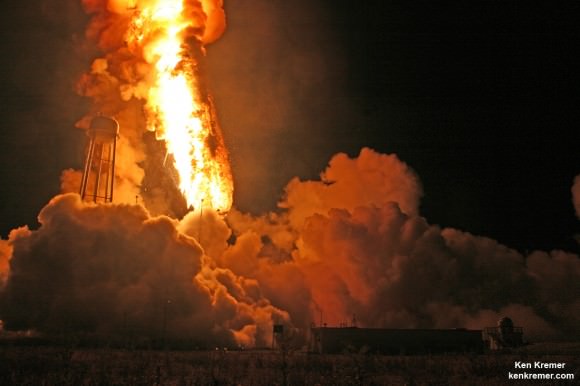
I was an eyewitness to the awful devastation suffered by the Antares/Cygnus Orb-3 mission from the press viewing site at NASA Wallops located at a distance of about 1.8 miles away from the launch complex.
Our remote cameras were placed directly adjacent to the Antares pad OA at the Mid-Atlantic Regional Spaceport (MARS) on Wallops Island, VA, and miraculously survived the rocket’s destruction as it plunged to the ground very near and just north of the seaside launch pad.
All of our team’s cameras and image cards were impounded by Orbital’s Accident Investigation Board (AIB) that was assembled quickly in the aftermath of the disaster and charged with determining the root cause of the launch failure.
The photos captured on our image cards were used as evidence and scrutinized by the investigators searching for clues as to the cause, and have only just been returned to us in the past two days. Similar NASA and Orbital Sciences photos have not been publicly released.
Collected here in Part 1 is a gallery of images from our combined journalist team of Universe Today, AmericaSpace, and Zero-G news. Part 2 will follow shortly and focus on our up close launch pad videos.

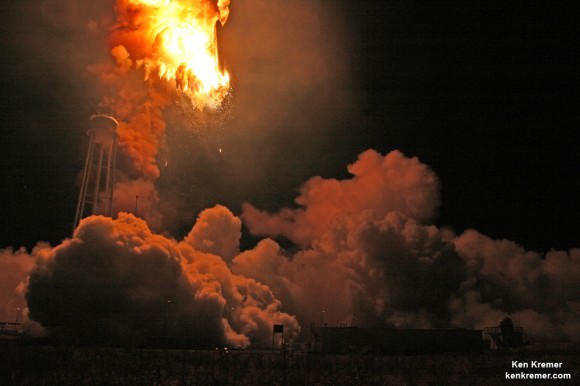
My lead image shows Antares’ descent into a hellish inferno. And more below clearly show that the south side engine nozzle was intact after the explosion. Thus it was the north side engine that blew up. See my up close AJ26 engine photo below.
Images from my colleagues Matthew Travis, Elliot Severn, Alex Polimeni, Charles Twine, and Jeff Seibert also show exquisite views of the explosion, fireball, and wreckage from various positions around the launch pad.
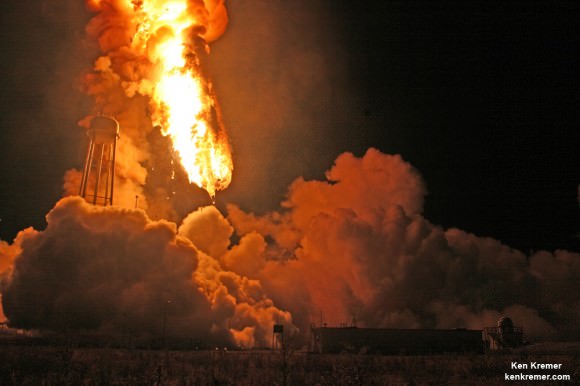
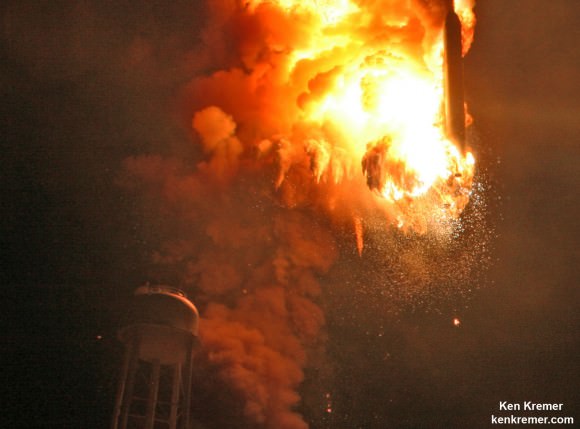
Moments after liftoff, the highly anticipated Antares launch suddenly devolved into utter catastrophe and a doomed descent into a hellish inferno of bloodcurdling terror – falling as a flaming incinerating carcass of unspeakable horror that ended in a mammoth deafening explosion as the pitiful wreckage smashed into the ground and blew back upwards as a raging fireball and hurtling debris that was visible across a wide swath of the sky.
The awful scene was seen by hordes of expectant spectators for miles around the Wallops area.
The disaster’s cause has almost certainly been traced to a turbopump failure in one of the rocket’s Soviet-era first stage engines, according to official statements from David Thompson, Orbital’s Chairman and Chief Executive Officer.
The AJ26 engines were originally manufactured some 40 years ago in the then Soviet Union as the NK-33.
They were refurbished and “Americanized” by Aerojet Rocketdyne.
“While still preliminary and subject to change, current evidence strongly suggests that one of the two AJ26 main engines that powered Antares first stage failed about 15 seconds after ignition. At this time, we believe the failure likely originated in or directly affected the turbopump machinery of this engine, but I want to stress that more analysis will be required to confirm that this finding is correct,” said Thompson.
Overall this was the 5th Antares launch using the AJ26 engines.
The 14 story Antares rocket is a two stage vehicle.
The liquid fueled first stage is filled with about 550,000 pounds (250,000 kg) of Liquid Oxygen and Refined Petroleum (LOX/RP) and powered by a pair of AJ26 engines that generate a combined 734,000 pounds (3,265kN) of sea level thrust.
The Oct. 28 launch disaster was just the latest in a string of serious problems with the AJ-26/NK-33 engines.
Earlier this year an AJ26 engine failed and exploded during pre launch acceptance testing on a test stand on May 22, 2014 at NASA’s Stennis Space Center in Mississippi.
Besides completely destroying the AJ26 engine, the explosion during engine testing also severely damaged the Stennis test stand. It has taken months of hard work to rebuild and restore the test stand and place it back into service.
Antares was carrying Orbital’s privately developed Cygnus pressurized cargo freighter loaded with nearly 5000 pounds (2200 kg) of science experiments, research instruments, crew provisions, spare parts, spacewalk and computer equipment and gear on a critical resupply mission dubbed Orb-3 bound for the International Space Station (ISS).
It was the heaviest cargo load yet lofted by a Cygnus. Some 800 pounds additional cargo was loaded on board compared to earlier flights. That was enabled by using the more powerful ATK CASTOR 30XL engine to power the second stage for the first time.

The astronauts and cosmonauts depend on a regular supply train from the ISS partners to kept it afloat and productive on a 24/7 basis.
The Orbital-3, or Orb-3, mission was to be the third of eight cargo resupply missions to the ISS through 2016 under the NASA Commercial Resupply Services (CRS) contract award valued at $1.9 Billion.
Orbital Sciences is under contract to deliver 20,000 kilograms of research experiments, crew provisions, spare parts, and hardware for the eight ISS flights.
Enjoy the photo gallery herein.
And watch for Part 2 shortly with exquisite videos, more photos, and personal reflections from our team.


Watch here for Ken’s ongoing reporting about Antares and NASA Wallops.
Stay tuned here for Ken’s continuing Earth and Planetary science and human spaceflight news.

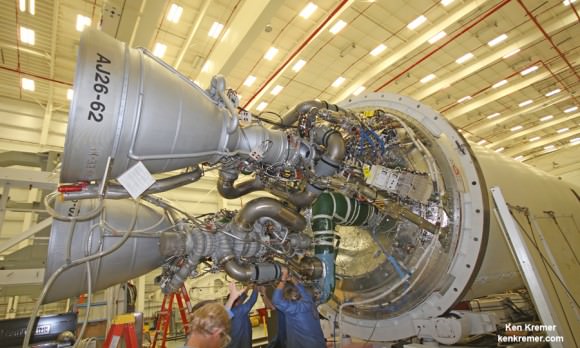
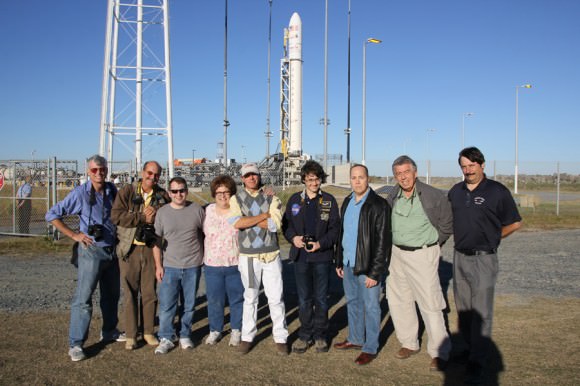

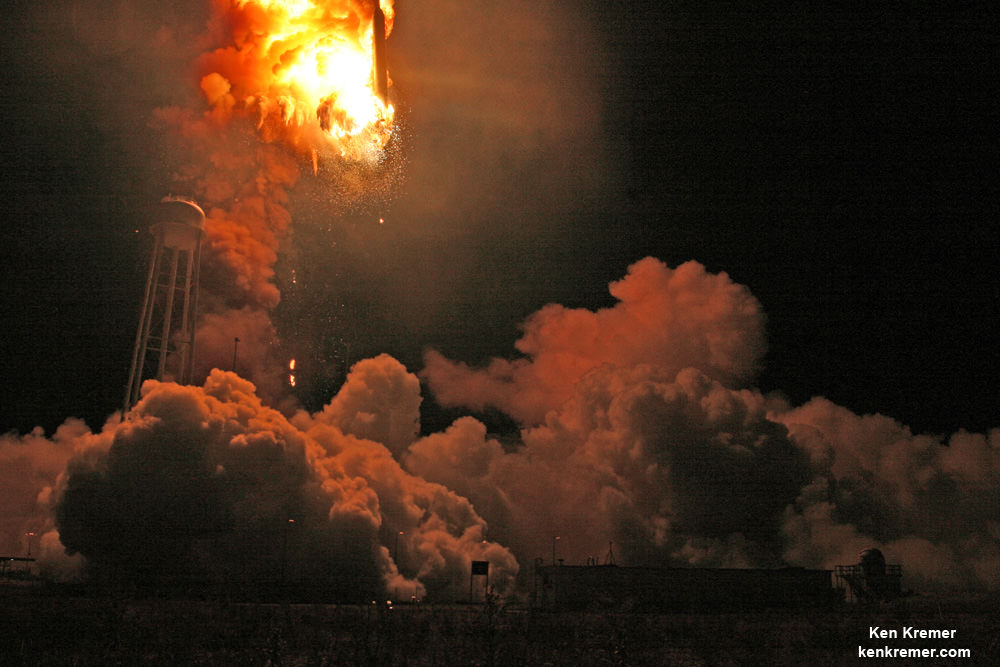
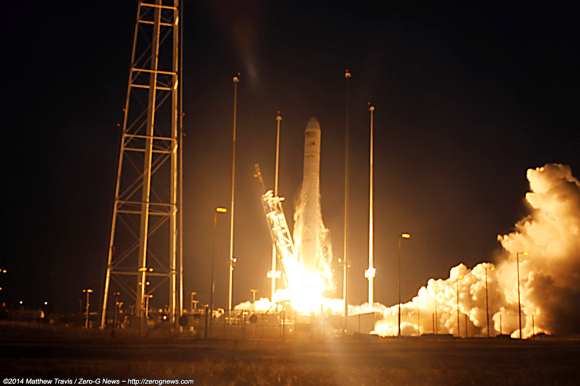

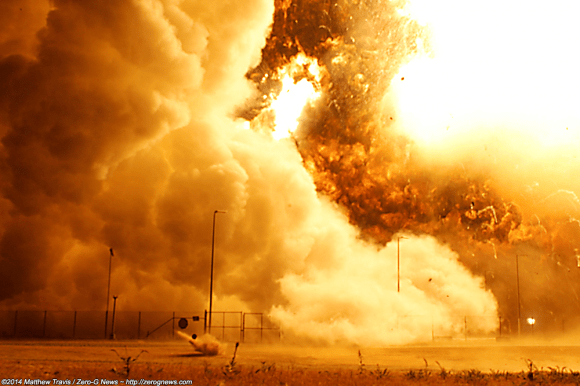
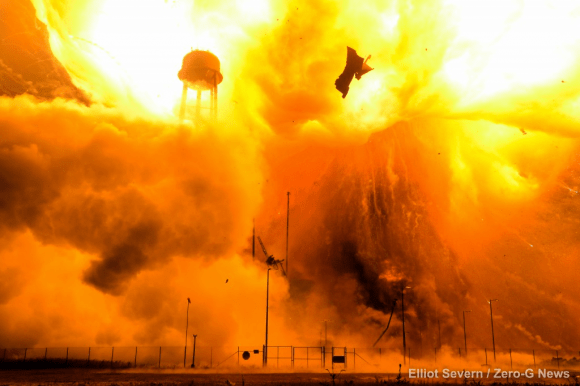
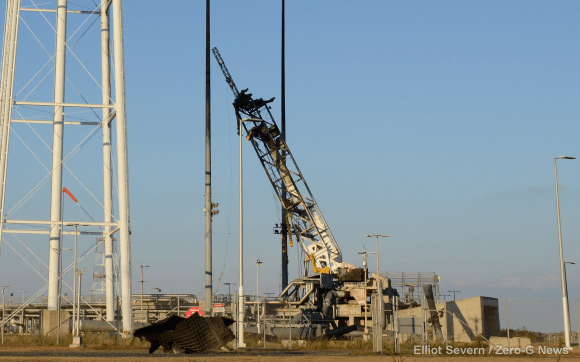


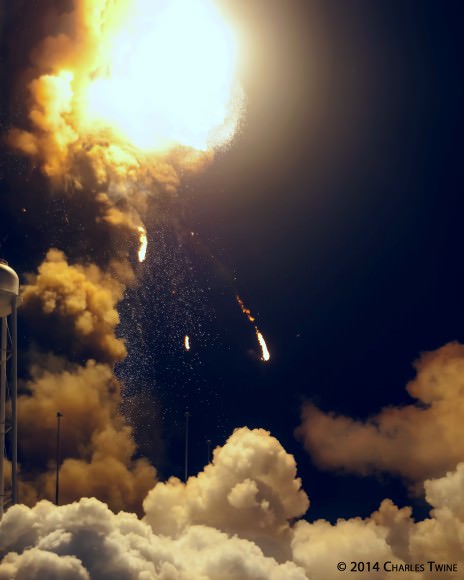
This awful event reminded me of the Proton M failure back in July. In this linked video I was surprised to see the windows of the room the video was taken from were shattered by that explosion. So… I am surprised the ‘up-close’ camera’s survived the Antares conflagration.
Sentence of the Year! —
“Moments after liftoff, the highly anticipated Antares launch suddenly devolved into utter catastrophe and a doomed descent into a hellish inferno of bloodcurdling terror – falling as a flaming incinerating carcass of unspeakable horror that ended in a mammoth deafening explosion as the pitiful wreckage smashed into the ground and blew back upwards as a raging fireball and hurtling debris that was visible across a wide swath of the sky.”
I don’t think it was the turbo pump that failed first. You can see very clearly on the videos that the turbo pump is working for a few tenths of a second after the first failure. So, something failed beyond the turbo pump and after losing the 145 bar back pressure from the combustion chamber the turbine likely oversped (maybe robbing the turbine shaft bearings from coolants they need) and.. well, it was spectacular.